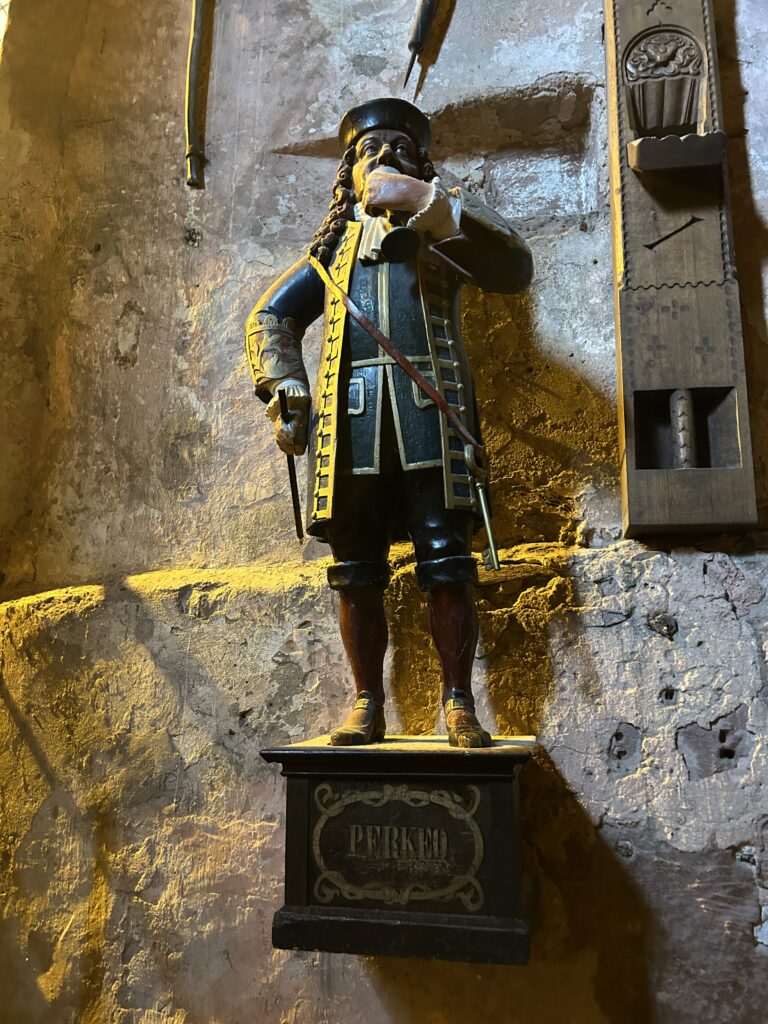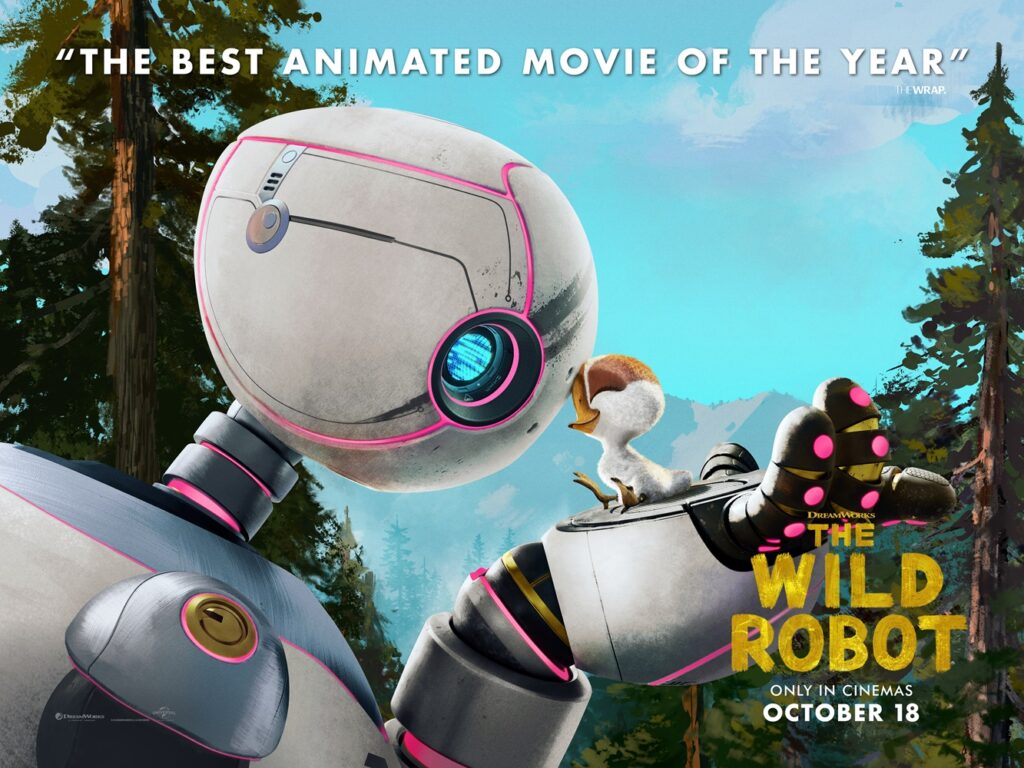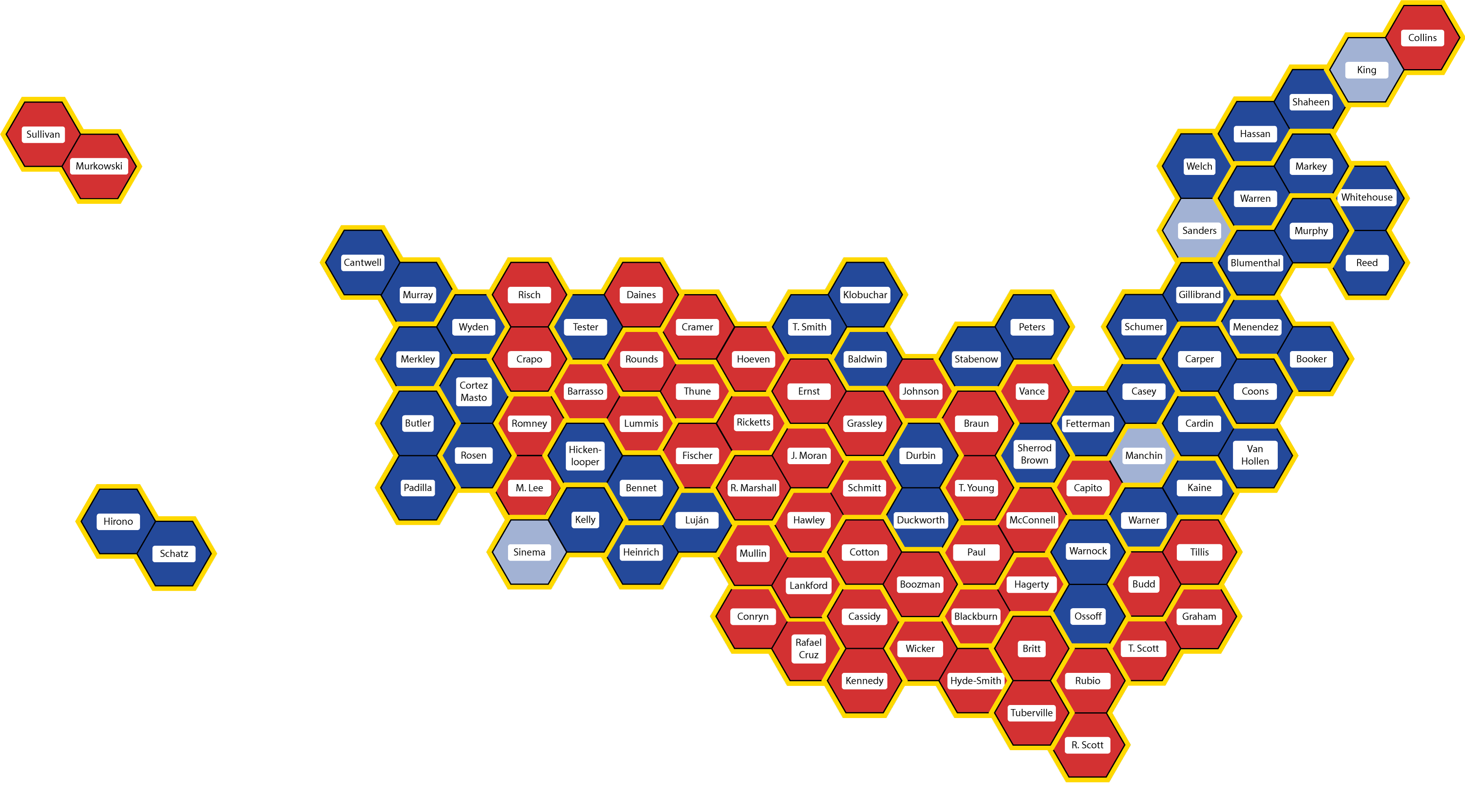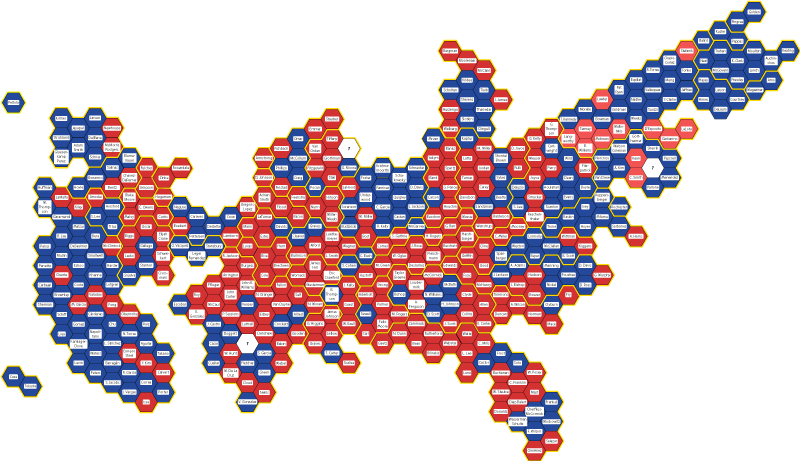Every election, conservatives struggle to understand the simplest, most fundamental principle of our Democracy: Land doesn’t vote, People vote. And so it was again with the 2025 Virginia Governor election. Threads user stvo0311 posted this map with the caption “Tell me that Virgina wanted a Dem as Governor. These elections need to be scrutinized more”:
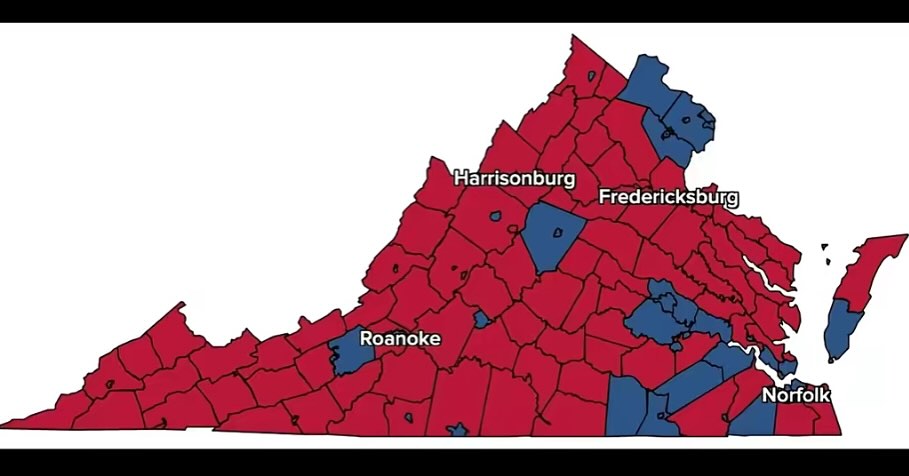
The map shows Virginia’s 95 counties and 38 independent cities. Red represents Republican candidate Winsome Earle-Sears and blue represents Democratic candidate Abigail Spanberger. Sure, this map gives the visual impression that Virginia wanted a Republican governor. But remember: Land doesn’t vote, people vote.
What would happen if you followed the “people vote” principle and scaled the map so that the area of each county was not determined by its land area, but by the number of people who voted? Here is what the map looks like:
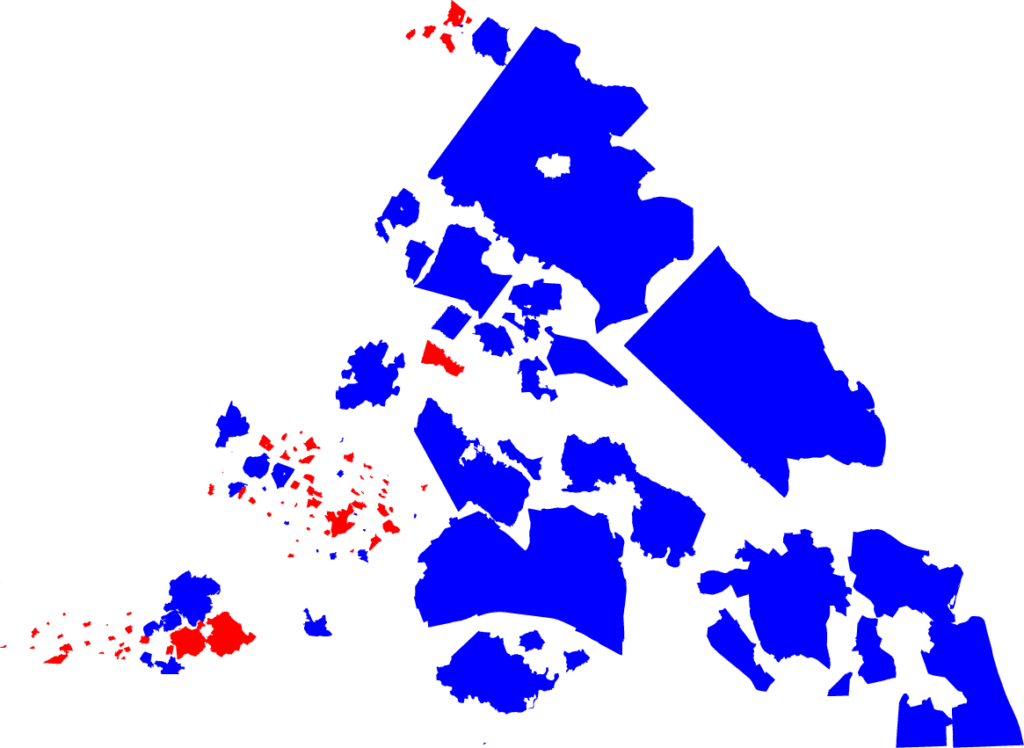
This kind of map, where size is determined not by real-life size but by population or some other variable, is called a “cartogram.” It is a much fairer representation of what voters want for the Governor of Virginia.
It’s not perfect – remember that counties don’t vote, people vote. The map is all-or-nothing, ignoring all votes for Earle-Sears in blue counties and all votes for Spanberger in red counties. Elections are all or nothing, but they are all or nothing at the state level, not the county level. A better representation would show counties in shades of purple corresponding to the percent vote for either candidate. And I might make that map someday. (Also, the counties are not in their true positions – I just moved them around in an effort to make the graph look roughly like Virginia.)
But this map gives a clear answer to the question “Did Virginia voters want to elect a Democratic governor?” And the answer is Hell Yes.
How did I do it? See the code I ran to generate the map. The code outputs an .svg file. The file has many counties overlapping, so I used Adobe Illustrator to move the counties around until they were all visible.
Want to do it yourself? Create an account on SciServer, the science platform that allows you to upload, analyze, and visualize data in a web browser (and which is my day job). Email me your username and I’ll help you access the data. You can get the code from my election cartograms GitHub repository.

